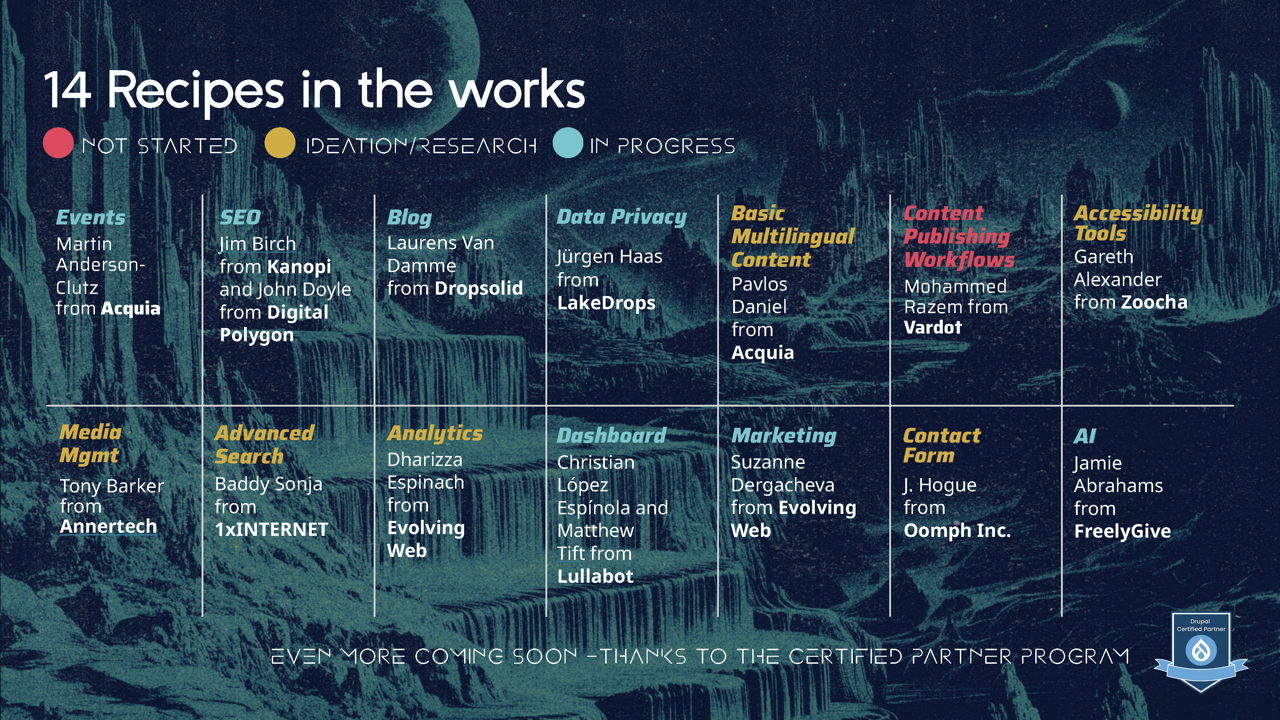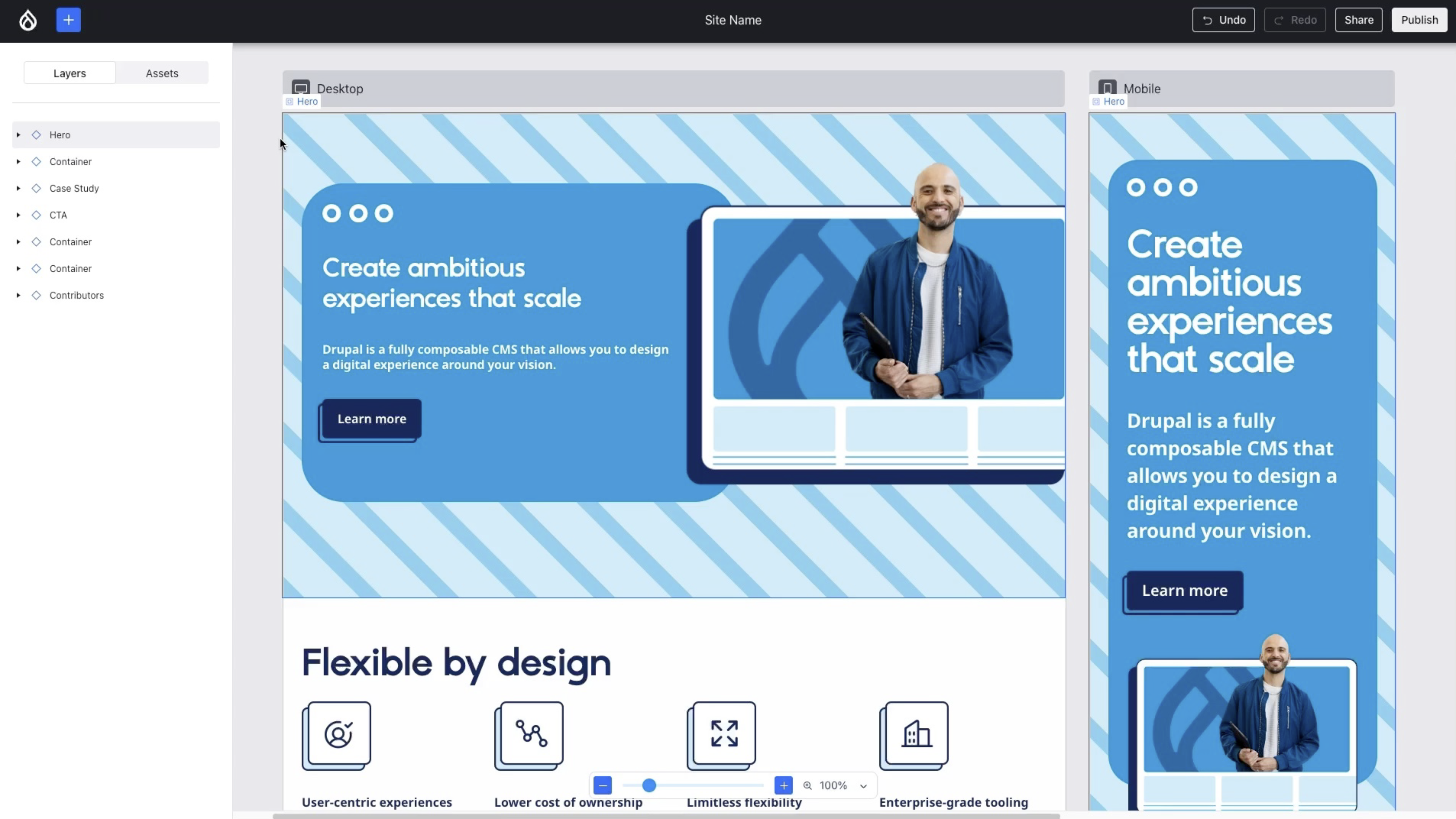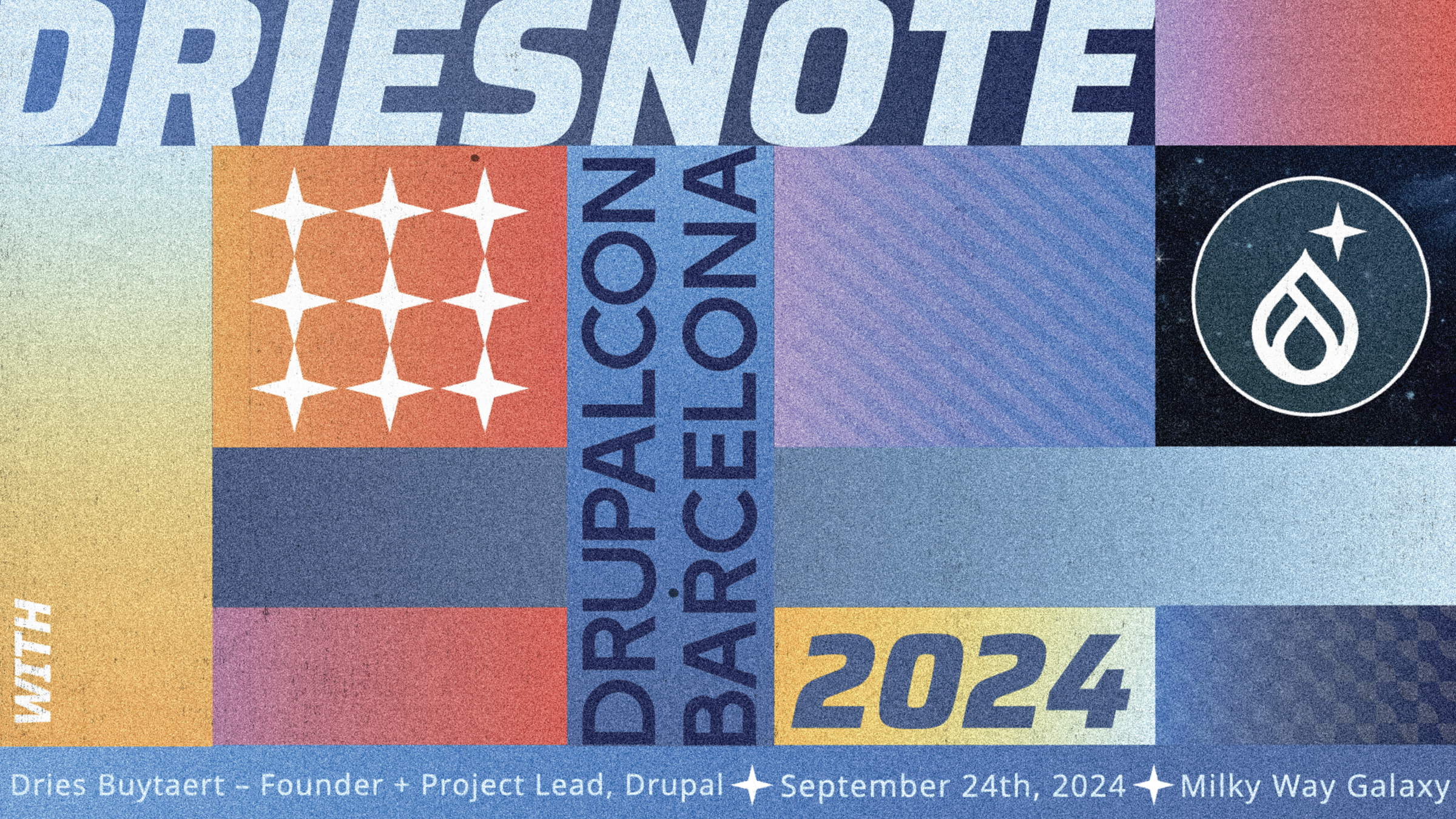At DrupalCon Barcelona 2024, Dries Buytaert, the creator and project lead of Drupal, delivered his 40th DriesNote, in which he shared an exciting vision of where the platform is heading, with a strong focus on Drupal CMS (the product being developed as part of the Starshot Initiative). As part of the Starshot Initiative’s Leadership Team, I’m the Marketing Lead, working to align the positioning of the product with the needs of our target audiences: primarily marketers, content teams, and site builders, but also evaluators, designers, and developers.

I’m also excited to contribute along with my colleagues at Evolving Web— who are leading the Analytics track. We’re proud to contribute to Drupal CMS (formerly known as Starshot). With a focus on Drupal CMS, Experience Builder, AI innovations, and a commitment to responsible AI, Dries outlined how the platform is becoming more accessible to non-developers while pushing the innovation and flexibility that Drupal is known for.
If you missed the DriesNote, I will share some key takeaways below. Check out the recording for the preview demo of Drupal CMS and all the exciting features ahead directly from Dries.
Drupal CMS
Drupal CMS is being designed to make the power of Drupal more accessible than ever, offering preconfigured solutions that allows marketers, web designers, and organizations to easily build and manage their own websites.
It’s important to note that Drupal CMS isn’t some reduced-functionality, beginner-friendly version—it’s built on the robust foundation of Drupal Core. This means that while it is designed to make getting started with Drupal easier for new users, it still offers all the power, flexibility, and scalability that experienced developers rely on. Drupal CMS will open the door to greater adoption directly by marketers and non-developers, making it simpler to use without sacrificing any of the advanced capabilities that make Drupal such a powerful tool for complex websites.
Preview of Drupal CMS
In the DriesNote demo, Dries demonstrated just how easy it will be to get up and running with Drupal CMS, by showing how a fictional marketer named ‘Sarah’ could easily create a wine tour website with a calendar to highlight upcoming tasting tours.
What Are Recipes?
A standout feature of Drupal CMS is the introduction of Recipes, which are pre-configured functionality, like SEO optimization or event management, that can be easily added to your website. They package content types and other configuration into easily reusable bundles.
The benefit is that you can add features quickly, use smart defaults that have been carefully selected by experts, and take advantage of best practices even if you’re not a technical user.
Dries demonstrated how Sarah used an Events Recipe to set up an interactive calendar and SEO-friendly pages for her wine tour website. With just a few clicks, Sarah was able to accomplish in hours what would previously take days.

AI-Driven Site Building and Migration
One of the most exciting moments of the DriesNote was the unveiling of AI Agents, which automate many complex tasks in Drupal. These AI agents, embedded within Drupal CMS, allow non-technical users to rename content types, create custom fields, and enforce image quality standards—all through simple, plain-language commands.
Dries showed how Sarah leveraged AI to make critical site changes quickly. From migrating content from a non-Drupal website to setting up structured content types, AI simplifies traditionally cumbersome processes.
Additionally, Drupal’s AI is transparent and flexible. Users can see what language models are used and even swap out the default AI providers with their own models, offering an extra layer of customization and control.
A Commitment to Responsible AI
As part of Drupal’s commitment to the open web, Dries announcedDrupal’s new Responsible AI Policy, which is built around the following principles:
- Human in the Loop: AI decisions must be reviewable and reversible by a human.
- Transparency: Users must know where and how AI is being used on their sites.
- AI Model Flexibility: Drupal users can select different AI providers based on their needs, ensuring that privacy, ethics, and energy efficiency are prioritized.
This policy has been developed to not only drive the incorporation of AI features into Drupal CMS but to also encourage its adoption by other parts of the Drupal ecosystem including Drupal core and Drupal contrib.
Experience Builder
Another major highlight from the keynote was a preview of Experience Builder, a React-based interface for modifying the UX and UI of a website. It provides content editors and marketers with a no-code builder that gives end-users the ability to add components, select styling options, and apply branding to the website without writing custom code. What really makes it user-friendly is how fast the interface is. Thanks to the fact that it’s React-based, clicks feel instant. This encourages users to experiment and makes the overall experience much more positive. It’s built using Single Directory Components (SDCs), making it familiar to front-end developers.
Experience Builder will be part of Drupal CMS but is also set to revolutionize the way that all Drupal websites are built. The plan is for it to eventually replace the current Drupal admin UI, providing a more intuitive way to edit all aspects of a Drupal website. During the keynote, Dries presented a demo of Experience Builder, showcasing its initial version, with drag-and-drop interface, as well as an overview of what it will look like in the future.
With 30 full-time developers working on it—making it the largest, fastest-moving initiative ever undertaken in Drupal—Experience Builder will significantly modernize how websites are built and managed in Drupal, eventually replacing the current Drupal admin interface.

A Roadmap for Drupal CMS
A pre-release version of Drupal CMS is available to install so you can try it out and a hosted version is also available so you can try out the AI capabilities for yourself right from your browser. The first release of Drupal CMS will happen on January 15th, 2025—Drupal’s 24th birthday. A release candidate will be launched at DrupalCon Singapore, happening on December 9-11, 2024. Experience Builder will be included in version 2 of Drupal CMS sometime in 2025.
The “Adopt a Document” Program
In addition to these technical advancements, Dries introduced the Adopt-a-Document program, a new initiative aimed at improving Drupal’s documentation, not only for Drupal CMS but also for Drupal Core. Organizations can sponsor sections of documentation to help ensure that Drupal remains well-supported and accessible for all users through a partnership with Drupalize.me. In addition, the Drupal Association is hiring a full-time documentation lead.
Get Involved
The message of Dries’ keynote was clear: Drupal CMS is not just about making web development easier; it’s about making the open web accessible to everyone. With AI-driven tools, intuitive page building, and a commitment to responsible technology, Drupal CMS is set to bring the power of Drupal to a whole new generation of users.
Whether you're a developer, a site builder, or a marketer, this is a great time to get involved and help shape the future of Drupal. Want to join us in pushing these initiatives forward? Get in touch or learn more at drupal.org/about/starshot.

